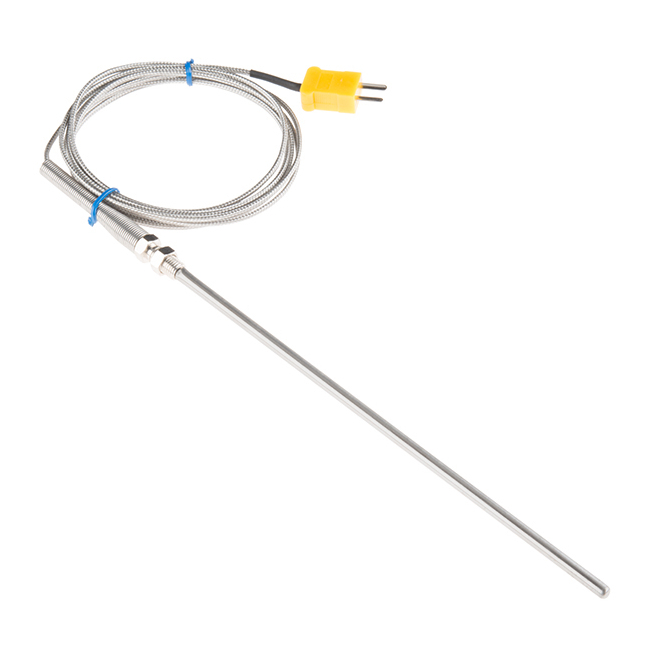Thermocouple Type-K - Stainless Steel
This is a stainless steel, Type-K Thermocouple probe. A thermocouple works by taking two wires made of dissimilar metals, connecting them at the two ends, and making a temperature gradient between one end and the other (a 'hot' end and a 'cold' one). Once this is achieved, a voltage potential is formed and current flows. One junction is held in the environment where the temperature of interest exists, this is known as the hot junction. The other junction, referred to as the cold junction, can typically be found in ICs that specialize in reading the temperatures detected by the thermocouple probe.
This common Type-K Thermocouple is made out of chromel and alumel, while offering a temperature high of 400°C and a low of 0°C. The probe itself is only 200mm (7.8in) long with a diameter of 5mm (~0.2in) and is terminated with a standard thermocouple connector.
Note: This Type-K Thermocouple probe is not intended to be used for food.
Features:
- Type-K
- Standard Thermocouple Connector
- Temperature Range: 0-400°C
- Probe Dia: 5mm
- Probe Material & Length: stainless steel, 200mm
Videos
| Manufacturer | SparkFun |
|---|




